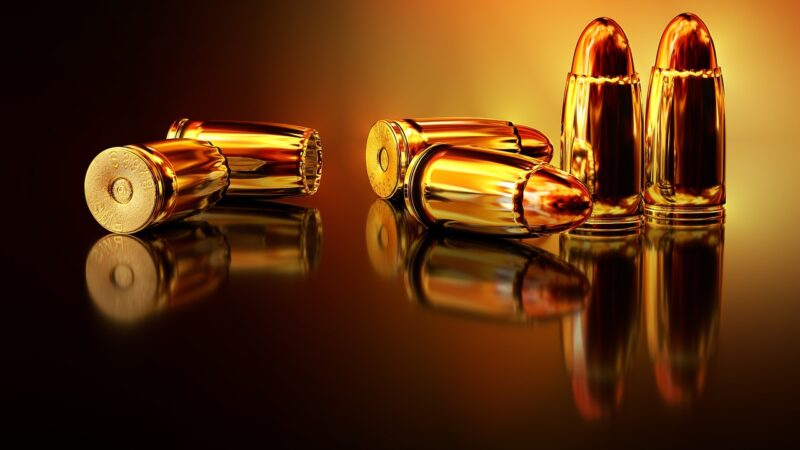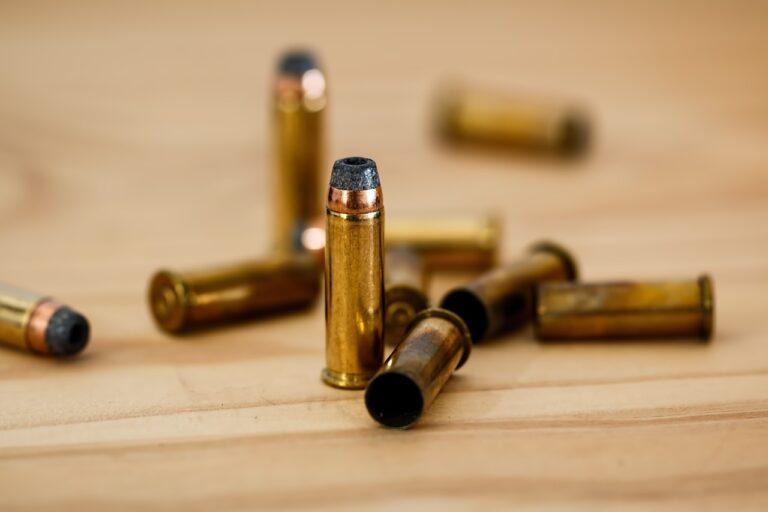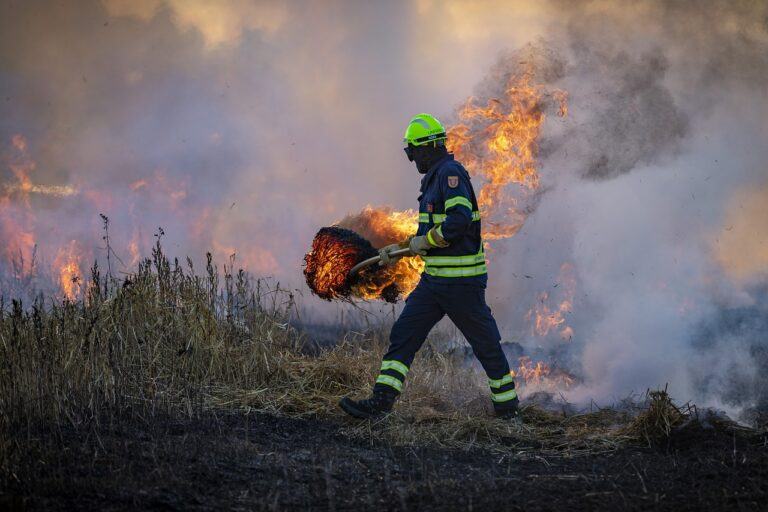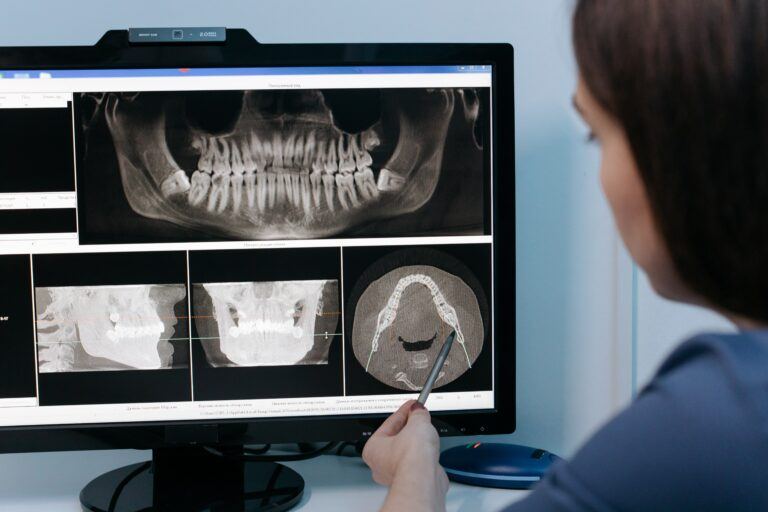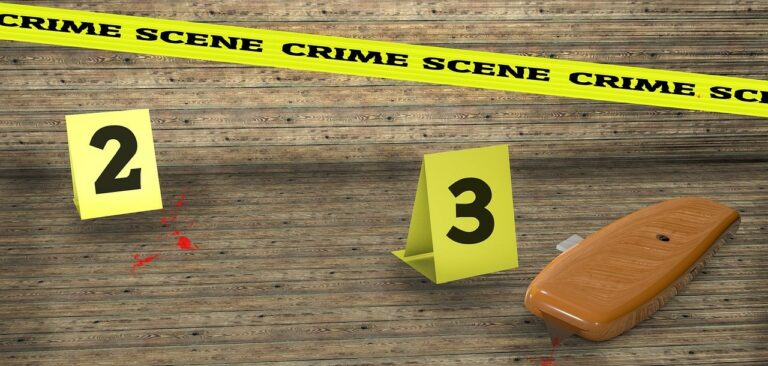Forensic Ballistics History
To understand the present and the field of forensic ballistics, we must first travel through time and discover its origins. Firearms have played a pivotal role in human history, both as tools of protection and instruments of destruction. Therefore, understanding the science of firearms and how experts link bullets to guns and crime scenes is essential to understanding forensic ballistics.
Forensic Ballistics History: A Journey Through Time
The fascinating field of ballistics, which encompasses the science of firearms and projectiles, has a rich history that dates back centuries. In fact, it has evolved from its early roots into a crucial component of modern forensic science.
The history of ballistics can be traced to ancient civilizations. In fact, one of the earliest recorded uses of projectiles comes from the Chinese, who developed primitive gunpowder-based weapons around the 9th century AD. These early firearms marked the beginning of the transition from traditional bows and arrows to more advanced weaponry.
Moreover, the development of gunpowder had a profound impact on the evolution of ballistics. By the 13th century, gunpowder-based weapons had spread to the Middle East and Europe, becoming an integral part of warfare. Cannons and firearms played decisive roles in battles and sieges, forever changing the dynamics of warfare.
Forensic Ballistics History: The Birth of Ballistics
Forensic ballistics, the application of ballistic science to criminal investigations, emerged in the late 19th century. Furthermore, Dr. Calvin Goddard, an American forensic scientist, is often credited as one of the pioneers of this field. He developed techniques for comparing bullets and cartridge cases to identify the firearms from which they were fired.
Significantly, the 20th century brought rapid advancements in firearm technology and ammunition. World War I and World War II played significant roles in accelerating these developments. The increased use of firearms in conflicts spurred further research and innovation in ballistics.
Forensic Ballistics History: Modern Ballistics
In the modern era, forensic ballistics has become an indispensable tool for law enforcement agencies worldwide. It has played a pivotal role in solving crimes, linking bullets to guns, and reconstructing shooting incidents. Today, advanced technology, such as computerized databases and digital imaging, has enhanced the capabilities of ballistics experts.
As we journey through the history of ballistics, we gain a deeper appreciation for the science that continues to evolve and contribute to the pursuit of justice. In the following sections, we will explore the principles and techniques that make forensic ballistics an invaluable asset in criminal investigations.
The Science of Firearms
Firearms are mechanical devices that propel projectiles, such as bullets, at high speeds. In fact, they come in various types, from pistols to rifles and shotguns, each with unique features. Ammunition, bullets, and cartridges play a crucial role in their function.
When a bullet is fired from a firearm, it embarks on a journey with its own story to tell. To uncover this story, ballistics experts unravel this narrative by examining the bullet’s trajectory and behavior. The study of forensic ballistics encompasses three main categories: internal, external, and terminal ballistics.
- Internal Ballistics: This area focuses on what happens inside the firearm when the trigger is pulled. It examines the forces that propel the bullet from the cartridge case and into the barrel, as well as the interactions between the bullet and the gunpowder.
- External Ballistics: External ballistics deals with the flight of the bullet after it leaves the barrel. Experts study the factors that affect its path, including air resistance, gravity, and wind. Calculating these variables helps reconstruct the bullet’s trajectory.
- Terminal Ballistics: Terminal ballistics explores the effects of the bullet upon impact with a target. This includes studying how bullets deform or fragment upon hitting a surface and the subsequent wound patterns they create.
Firearm Identification
One of the key aspects of forensic ballistics is firearm identification. Indeed, just as each person has unique fingerprints, firearms have distinct characteristics that leave markings on bullets and cartridge cases. Experts use specialized tools like the comparison microscope to match these marks, linking bullets to the specific gun they were fired from.
More specifically, tool marks and striated patterns are the focus of firearm identification. These marks are like signatures, unique to each firearm. The rifling inside the barrel imparts specific patterns onto the bullet, helping experts make precise matches.
Crime Scene Analysis: Forensic ballistics extends beyond the laboratory to crime scenes themselves. Specifically, ballistics experts work alongside law enforcement to collect and preserve ballistic evidence. Their expertise aids in the reconstruction of shooting incidents, shedding light on what transpired.
Now that we have a basic understanding of forensic ballistics, let’s dive deeper into each aspect, beginning with an exploration of firearms and ammunition.
Forensic Ballistics History: Understanding Firearms and Ammunition
In our exploration of forensic ballistics, it’s essential to begin by understanding the fundamental elements of firearms and ammunition. These are the building blocks upon which the science of ballistics is constructed.
Firearms: Types and Components
Firearms, commonly known as guns, come in various types, each designed for specific purposes. The primary types of firearms include:
1. Handguns: Handguns, such as pistols and revolvers, are compact and designed to be held in one hand. They are commonly used for self-defense and as sidearms by law enforcement.
2. Rifles: Rifles are long-barreled firearms designed for accuracy at longer ranges. They are often used in hunting and sports shooting.
3. Shotguns: Shotguns have a smoothbore barrel and are used for shooting pellets (shot) or slugs. They are versatile and commonly used in hunting and home defense.
4. Automatic and Semi-Automatic Firearms: These firearms can fire multiple rounds with a single pull of the trigger. Specifically, automatic firearms continue to fire as long as the trigger is held, while semi-automatic firearms fire one round per trigger pull.
The components of a firearm include the barrel, action (the mechanism that loads, fires, and ejects cartridges), stock or grip, and the magazine or cylinder, depending on the type of firearm.
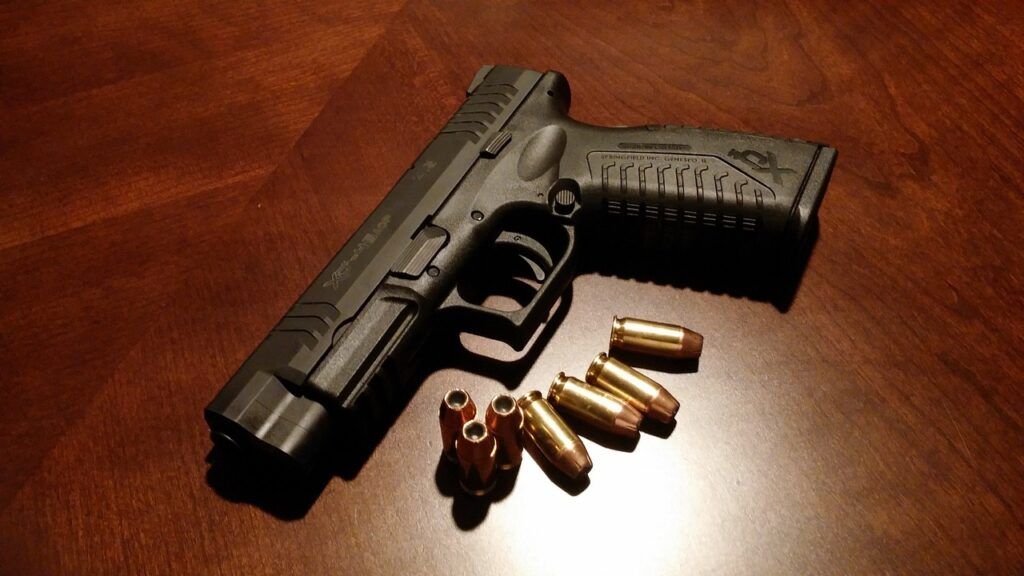
Ammunition: Types and Components
Ammunition, often referred to as “ammo,” is the essential element that makes firearms functional. It consists of the following components:
1. Cartridge Case: This is the outer casing that holds the other components. It typically contains the primer, propellant (gunpowder), and the bullet.
2. Primer: The primer is a small, sensitive explosive that ignites when struck by the firearm’s firing pin. It initiates the combustion of the gunpowder.
3. Gunpowder: Gunpowder, also known as a propellant, is a chemical substance that burns rapidly, creating high-pressure gases that propel the bullet down the barrel.
4. Bullet: The bullet is the projectile that is fired from the firearm’s barrel. It is typically made of lead or a lead core surrounded by a jacket made of copper or other materials.
Understanding the components of firearms and ammunition is crucial for forensic ballistics experts. Therefore, it allows them to trace the path of a bullet, analyze the markings left on cartridge cases, and ultimately link bullets to specific firearms.
Firearm identification is a cornerstone of forensic ballistics. Indeed, it involves analyzing the unique markings left on bullets and cartridge cases when fired from a specific firearm. These markings are like individual “signatures” that allow experts to match bullets to the guns that fired them.
In the following sections, we will explore how forensic ballistics experts use these unique markings to link bullets to guns and, ultimately, to crime scenes.
Forensic Ballistics History: The Science of Bullet Trajectories
The journey of a bullet after it’s fired from a firearm is a complex and dynamic process. Understanding how bullets travel and behave in flight is a critical aspect of forensic ballistics.
Internal Ballistics: The Initial Push
Internal ballistics is concerned with what happens within the firearm itself, right after the trigger is pulled. Therefore, when the trigger is squeezed, it releases the firing pin, which strikes the primer in the cartridge case. This ignition causes the gunpowder within the cartridge to rapidly combust, generating high-pressure gases. These gases propel the bullet forward, pushing it out of the barrel and into the air.
Furthermore, the speed at which the bullet exits the barrel is referred to as its muzzle velocity. Muzzle velocity varies depending on the type of firearm and ammunition used. It’s a key factor that influences the bullet’s trajectory.
External Ballistics: The Bullet’s Journey Through the Air
Once the bullet exits the barrel, it enters the realm of external ballistics. This branch of ballistics studies the bullet’s flight path through the air. Several factors affect external ballistics, including:
Aerodynamics: The shape of the bullet determines how it interacts with the air. A streamlined, aerodynamic shape reduces air resistance and helps the bullet maintain a stable flight path.
Gravity: Gravity constantly pulls the bullet downward. As it travels, the bullet follows a curved trajectory due to gravity’s influence.
Wind: Wind can push the bullet off its intended course, making it essential for ballistics experts to account for wind speed and direction during trajectory analysis.
Distance: The distance the bullet travels plays a significant role in its trajectory. Over longer distances, gravity has more time to act, causing the bullet to drop more.
Terminal Ballistics: Impact and Beyond
Terminal ballistics deals with what happens when the bullet strikes its target. Specifically, upon impact, the bullet’s behavior varies depending on factors like its shape, composition, and velocity. Some bullets may expand or fragment, while others may remain intact. The wound patterns created by bullets are vital clues in forensic investigations, helping experts reconstruct shooting incidents.
Furthermore, understanding bullet trajectories involves a deep knowledge of internal, external, and terminal ballistics. Forensic ballistics experts rely on this knowledge to analyze evidence from crime scenes and connect bullets to the firearms responsible.
Forensic Ballistics History: Crime Scene Analysis
The role of ballistics experts extends beyond the confines of the laboratory. They are an integral part of the investigative process at crime scenes involving firearms. In this section, we will delve into the critical role played by ballistics experts in crime scene analysis, detailing their responsibilities, evidence collection and preservation, and the ultimate goal of reconstructing shooting incidents.
The Role of Ballistics Experts at Crime Scenes
When a shooting occurs, law enforcement agencies often call upon forensic ballistics experts to assist in the investigation. These experts bring their specialized knowledge to the crime scene, working alongside detectives and forensic teams. More specifically, their primary responsibilities include:
Evidence Assessment: Ballistics experts assess the scene for potential ballistic evidence. This may include locating spent cartridge cases, bullets lodged in surfaces, and bullet impact points.
Trajectory Analysis: They determine the likely paths taken by bullets, including the direction from which shots were fired. This information is vital in understanding the sequence of events.
Firearm Identification: If firearms are recovered at the scene, experts may conduct preliminary examinations to determine if they match evidence found on bullets or cartridge cases.
Collection and Preservation of Ballistic Evidence
Collecting and preserving ballistic evidence is a meticulous process. Ballistics experts work diligently to ensure the integrity of the evidence, knowing that it may hold the key to solving the crime. Key steps in this process include:
Photographic Documentation: Experts begin by photographing the crime scene from various angles to document the location of evidence, bullet trajectories, and the overall layout.
Evidence Recovery: Spent cartridge cases, bullets, and other ballistic evidence are carefully collected using specialized tools and techniques to prevent contamination.
Chain of Custody: Strict chain of custody protocols are followed to maintain the integrity of the evidence from the moment it is collected to its arrival at the forensic laboratory.
Processing and Analysis of Ballistic Evidence
Once the ballistic evidence is transported to the forensic laboratory, a rigorous examination process begins. Experts employ state-of-the-art equipment and techniques to analyze the evidence, including:
Comparison Microscopy: The comparison microscope allows experts to closely examine bullets and cartridge cases, searching for unique markings left by the firearm that fired them.
Bullet Path Reconstruction: By analyzing the trajectories of bullets, experts can reconstruct the paths taken by projectiles and determine the angles and distances involved in the shooting.
Forensic Ballistics History: Real-World Examples
Ballistics experts often play a crucial role in reconstructing shooting incidents. For instance, they may use trajectory analysis to determine if a shooting was an act of self-defense or aggression. In cases of multiple gunshots, they can help establish the order in which shots were fired.
One notable example is the investigation of a drive-by shooting. In this scenario, ballistics experts can analyze the angles and trajectories of bullets to determine the shooter’s location within the vehicle, shedding light on the circumstances of the crime.
In conclusion, crime scene analysis by ballistics experts is an essential component of firearm-related investigations. Their expertise in evidence collection, preservation, and analysis contributes significantly to the reconstruction of shooting incidents.
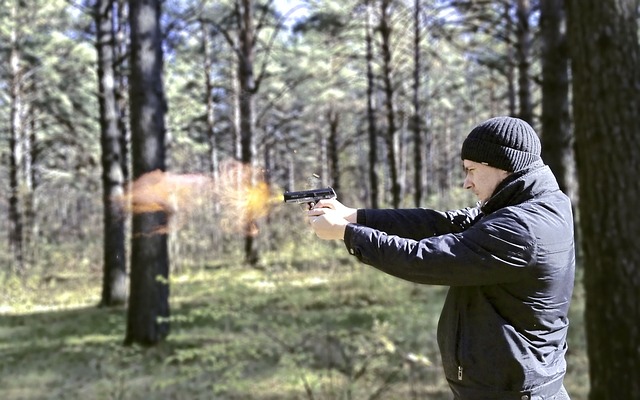
Forensic Ballistics History: Bullet Path Reconstruction
Bullet path reconstruction is a critical aspect of forensic ballistics that allows experts to unravel the sequence of events in a shooting incident.
Indeed, bullet path reconstruction involves a systematic examination of the shooting scene and the analysis of ballistic evidence. The process typically includes the following steps:
1. Scene Examination: Forensic experts visit the crime scene to gather essential information. They assess the locations of bullet impact points, bullet holes, and any other ballistic evidence.
2. Documentation: Detailed photographs and sketches are created to document the positions of evidence, including bullet holes, objects, and the victim’s location.
3. Establishing the Shooting Axis: Experts use the gathered data to establish the shooting axis, which is the line connecting the muzzle of the firearm to the point of bullet impact. This axis serves as a crucial reference for trajectory analysis.
4. Trajectory Analysis: With the shooting axis established, experts can calculate the trajectories of bullets. They analyze the angles and heights at which bullets struck various surfaces, helping to reconstruct the paths taken by projectiles.
Determining the Angle and Trajectory of Shots
Determining the angle and trajectory of shots is a process that relies on physics, geometry, and careful analysis. Key factors considered by ballistics experts include:
1. Bullet Holes and Impact Points: The location and size of bullet holes and impact points provide crucial information about the angle and trajectory of shots.
2. Bullet Deflection: Bullets can change direction upon impact with various materials. Experts consider the degree of deflection to reconstruct the bullet’s original trajectory.
3. Wound Examination: In cases of gunshot wounds, forensic experts examine entry and exit wounds on victims to determine the paths taken by bullets within their bodies.
4. Deformation and Expansion: The condition of bullets upon recovery can also reveal valuable insights. Deformed or fragmented bullets can indicate the angle of impact and the materials encountered.
Forensic Ballistics History: Real-World Cases
Bullet path reconstruction has played a vital role in solving numerous crimes. Here are a few real-world examples:
Assassination Attempt: In a high-profile case, bullet path reconstruction was used to determine that shots had been fired from a particular window. This crucial evidence led to the identification and apprehension of the perpetrator.
Homicide Investigation: In a murder investigation, the angles and trajectories of multiple gunshot wounds helped experts establish the sequence of shots, shedding light on the circumstances of the crime.
Accidental Discharge: In an accidental shooting incident, bullet path reconstruction confirmed that the firearm had discharged unintentionally. As a result, this finding influenced the legal outcome of the case.
Moreover, bullet path reconstruction is a powerful tool in forensic ballistics, aiding in the resolution of shooting incidents, the determination of guilt, and the pursuit of justice. Its analysis and the insights it provides are invaluable in criminal investigations.
Forensic Ballistics History: Advancements in Ballistics Technology
In recent years, the field of forensic ballistics has witnessed remarkable technological advancements, revolutionizing the way experts analyze firearms-related evidence. These innovations have enhanced the accuracy, speed, and comprehensiveness of investigations. In this section, we will highlight some of the key advancements in the field of forensic ballistics, including computer simulations, databases, and emerging technologies.
Forensic Ballistics History: Recent Technological Advancements
1. Computer Simulations: Computer modeling and simulations have become invaluable tools in forensic ballistics. Experts can now recreate shooting scenarios digitally. This allows for the analysis of various factors, such as bullet trajectories, in a controlled and precise environment. Additionally, this technology aids in the recreation of crime scenes, helping investigators understand the sequence of events.
2. Database Integration: The development of comprehensive firearm and ballistic databases has streamlined the process of firearm identification. These databases contain extensive records of bullet and cartridge markings from known firearms. Ballistics experts can compare evidence from crime scenes against these databases, potentially linking bullets to specific guns more efficiently.
3. 3D Imaging and Scanning: Advanced 3D imaging and scanning technologies enable experts to create highly detailed and accurate digital models of bullets, cartridge cases, and firearm components. This aids in the identification of unique markings and the comparison of evidence with known firearms.
4. Improvements in Microscopy: High-resolution microscopy techniques have evolved, allowing for even more precise analysis of tool marks and striated patterns on bullets and casings. This enhances the ability to match evidence to firearms.
Computer Simulations and Databases in Firearm Identification
Computer simulations play a crucial role in firearm identification by allowing experts to test various hypotheses and scenarios. For example, by inputting data from a crime scene, such as the position of bullet impact points and the victim’s location, experts can recreate potential shooting scenarios. This process aids in the determination of bullet trajectories, angles of fire, and the sequence of shots.
Moreover, databases are instrumental in forensic ballistics. Specifically, experts can identify potential matches with known firearms by comparing markings on bullets and cartridge cases from a crime scene to those in the database. This technology expedites the investigative process and increases the chances of linking bullets to specific guns.
The future of ballistics investigations holds exciting possibilities with the continued development of emerging technologies. For example, some potential advancements include:
1. Artificial Intelligence (AI): AI algorithms may assist in pattern recognition and the identification of subtle markings that may be missed by the human eye, further improving the accuracy of firearm identification.
2. Virtual Reality (VR) and Augmented Reality (AR): VR and AR technologies could provide immersive training for ballistics experts and enhance crime scene analysis by overlaying digital reconstructions onto real-world scenes.
3. Advanced Materials Analysis: Innovations in material science may lead to new methods for analyzing bullets and casings, providing even more accurate comparisons and identifications.
As technology continues to evolve, forensic ballistics experts will be at the forefront of adopting these advancements. Ultimately enhancing their ability to solve crimes involving firearms and contribute to the pursuit of justice.
Forensic Ballistics History: Challenges and Limitations
While forensic ballistics is a powerful tool for solving crimes involving firearms, it is not without its challenges and limitations.
Lack of Standardization in Firearm Markings: Firearms are manufactured by various companies, and there is often a lack of standardization in the markings they leave on bullets and cartridge cases. This variability can make it challenging to match evidence to specific firearms, as there is no universally accepted system for firearm markings.
Firearm Modifications: Additionally, firearms enthusiasts may modify their weapons, altering the markings they leave on bullets and casings. These modifications can complicate the process of firearm identification, as the unique markings may change.
Aging and Wear: Over time, firearms can undergo wear and tear, affecting the consistency of markings they leave on ammunition. Therefore, bullets fired from older or heavily used firearms may have less distinct markings, making identification more challenging.
Limited Databases: Although firearm and ballistic databases are valuable resources, they are not always comprehensive. There may be gaps in the data, limiting the ability to make matches between evidence and known firearms.
Forensic Ballistics History: Limitations of Forensic Ballistics
Subjectivity: Forensic ballistics, like many forensic disciplines, can involve a degree of subjectivity. Experts rely on their training and experience to make comparisons and identifications, which can introduce an element of human judgment.
Sample Size: The accuracy of firearm identification can be influenced by the size and quality of the sample data available for comparison. In cases with limited or degraded evidence, it may be more challenging to make definitive identifications.
False Positives and Negatives: Despite rigorous analysis, there is always a possibility of false positives (incorrectly identifying a match) and false negatives (failing to identify a true match). These errors can have serious consequences in criminal investigations.
Environmental Factors: Environmental conditions at the crime scene, such as weather, lighting, and the presence of contaminants, can impact the preservation and analysis of ballistic evidence, potentially leading to errors or limitations in the investigation.
It is essential for investigators, forensic scientists, and the legal system to be aware of these challenges and limitations in forensic ballistics. While the field has made significant advancements, acknowledging its boundaries and potential sources of error is crucial for ensuring accuracy in criminal cases.
Forensic Ballistics History: Conclusion
Forensic ballistics, a discipline born of science and precision, stands as a cornerstone in the world of criminal investigations. Indeed, it has evolved from ancient beginnings to harness the power of cutting-edge technology and innovation. This will forever change the way we understand and solve crimes involving firearms.
More specifically, from the fundamental principles of bullet dynamics to the detailed analysis of firearm markings, forensic ballistics experts and evidence bring clarity to the most challenging cases. To achieve this, they employ computer simulations, databases, and emerging technologies to enhance their investigations, continually pushing the boundaries of what is possible.
Thank you for reading and please leave comments or questions below. To read about the role of social media in crime scenes, click here.
Also, to read extensive product reviews of 2023 visit my other website.
Willie McCain
